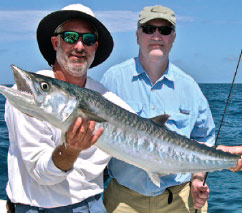The Tampa Bay Times
Capt. Brent Gaskill
Keeping a logbook of your fishing activities can be beneficial. The log can be as simple or as detailed as you want, but at least jotting down a few notes can help in establishing trends and patterns over time. Basic information should include date, time of day, location, tide, and target species. More advanced entries could include moon phase, water temperature, wind direction and speed, barometric pressure and more. There are many variables in the saltwater fishing equation and no two days are ever the same. Similarities however do occur and reoccur often. A logbook can help solve the fishing equation by focusing on similarities of successful trips. On the converse, unsuccessful trips are just as important to pay attention to so that they are not repeated. If you’ve been keeping a log then you should already be able to predict what is currently happening on the water. The spring kingfish run is in full swing. Tarpon have arrived early and many more are on the way. Redfish are moving with mullet schools in the shallows. Snook have moved out of the deep backcountry and are beginning to transition towards the beaches feeding heavily along the way. With so many options available on any given day, a personal log to reference can assist in determining what your best bet will be.
- Jay Mastry - March 26, 2024
- Captains Corner, Gorta - March 23, 2024
- Dave Zalewski - March 12, 2024











